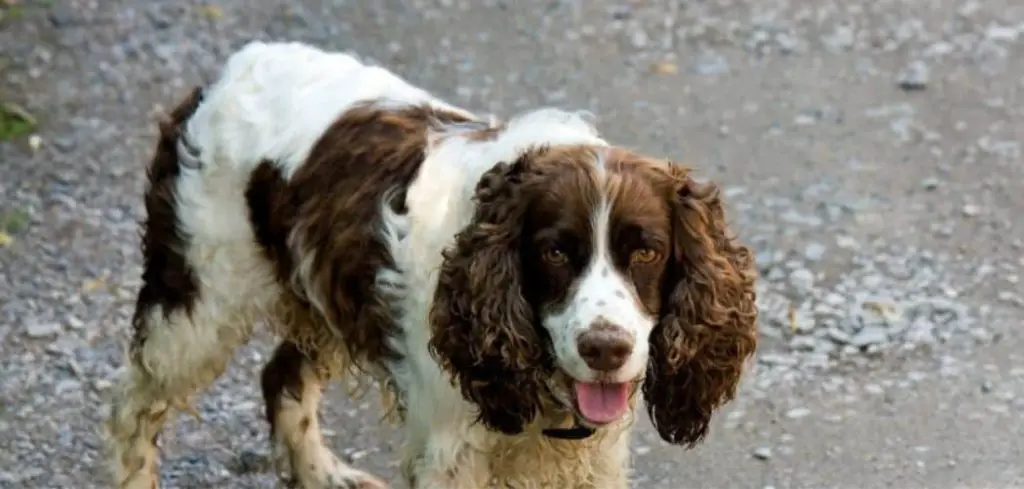Few things alarm dog owners more than seeing their pet vomit, pass bloody diarrhea, and refuse to eat.
This combination of symptoms is a red-alert scenario that signals something serious is affecting your dog’s digestive system—or possibly their entire body.
Whether it’s an acute infection, toxic ingestion, or organ failure, acting quickly is critical to preventing complications or even saving your dog’s life.
We outline the common causes of this combination of symptoms, what it means, and how to respond before your dog’s condition worsens.
Dog Vomiting Bloody Diarrhea and Not Eating: Why It Happens
Dog vomiting, bloody diarrhea, and not eating are a dangerous mix of symptoms that is often linked to conditions such as parvovirus, hemorrhagic gastroenteritis (HGE), intestinal parasites, pancreatitis, toxin exposure, or organ disease.
Vomiting and bloody diarrhea indicate inflammation or bleeding within the gastrointestinal tract, and the refusal to eat is a natural response to pain, nausea, or weakness.

Dog Vomiting Bloody Diarrhea and Not Eating: Common Causes
1. Parvovirus (Especially in Puppies or Unvaccinated Dogs)
Parvovirus is one of the most serious viral infections in dogs—especially puppies or dogs with incomplete vaccination.
It rapidly attacks the gastrointestinal lining, causing projectile vomiting, foul-smelling bloody diarrhea, and complete loss of appetite. Dehydration and sepsis can occur within hours.
This is a medical emergency, and immediate hospitalization is required.
Treatment includes IV fluids, anti-nausea medication, antibiotics, and sometimes plasma transfusions. Without prompt care, parvo can be fatal.
2. Hemorrhagic Gastroenteritis (HGE)
HGE is a condition that appears suddenly and causes explosive vomiting, bloody or jelly-like diarrhea, and lethargy.
It’s not fully understood, but is believed to be linked to bacterial overgrowth, stress, or immune dysfunction.
Dogs with HGE often stop eating completely and may go into shock if left untreated.
Veterinary care is essential and typically includes hospitalization, IV fluids, anti-nausea and anti-diarrheal medications, and close monitoring.
Related: Dog vomiting and not eating (Causes and when to worry)
3. Toxin Ingestion
If your dog ingests toxic substances like rat poison, chocolate, xylitol, or certain human medications, internal bleeding and severe gastrointestinal damage can occur.
This often presents as vomiting, bloody diarrhea, and refusal to eat, along with signs like tremors, drooling, or collapse.
Bring your dog to the vet immediately if you suspect poisoning.
The sooner treatment begins—usually with activated charcoal, fluids, and antidotes—the better your dog’s chances of recovery.
Related: Dog Vomiting Blood and Not Eating (Explained)
4. Gastrointestinal Ulcers or Foreign Objects
Sharp objects or long-term use of NSAIDs can cause ulcers or tears in your dog’s stomach or intestines.
These injuries often result in bloody vomit, diarrhea, and severe appetite loss.
Dogs with a blockage may also strain to poop, act restless, or show signs of abdominal swelling.
X-rays or an ultrasound may be required to locate the problem, and surgery could be needed if there’s an obstruction or perforation.
5. Severe Parasite Infestation
Heavy infestations of intestinal worms like hookworms, whipworms, or giardia can cause bloody stools, vomiting, and malnourishment.
Dogs may refuse food and grow weak quickly. Puppies, in particular, are at high risk for dehydration and anemia.
A stool test can identify parasites, and your vet will prescribe appropriate deworming medications and supportive care.
6. Pancreatitis
In more severe cases, pancreatitis can result in vomiting and diarrhea containing blood due to widespread inflammation in the digestive tract.
Dogs with pancreatitis may also have abdominal pain, fever, and a hunched posture.
Treatment includes a strict low-fat diet, anti-nausea medication, fluids, and sometimes hospitalization to manage symptoms and prevent worsening organ involvement.
Related: Dog Vomiting and Diarrhea Not Eating or Drinking (Here’s why)
What to Do If Your Dog Is Vomiting, Has Bloody Diarrhea, and Won’t Eat
This is not a wait-and-see situation. But while preparing for the vet, you can take the following immediate steps:
Do not give your dog food or treats, as this may worsen vomiting or cause further damage.
Withhold water temporarily if your dog is actively vomiting, but offer small ice chips to prevent dehydration.
Avoid over-the-counter meds, especially if you’re unsure of the cause. Some can be toxic to dogs.
Collect a stool sample, if possible, to bring to your vet.
Monitor signs of worsening, such as weakness, pale gums, collapse, or bloated abdomen.
Call your vet or emergency clinic as soon as you observe these symptoms together.
When to Call or Visit Your Vet
Take your dog to the vet or emergency clinic immediately if they are vomiting, have bloody diarrhea, and are not eating—especially if:
The vomiting or diarrhea has lasted more than 12 hours
Blood is bright red or looks like coffee grounds
Your dog is a puppy, senior, or immunocompromised
They’re becoming lethargic, unresponsive, or collapsing
Dehydration, weight loss, or fever is present
You suspect toxin ingestion or foreign object ingestion
Your vet may perform bloodwork, fecal tests, abdominal x-rays, or ultrasound to determine the cause, followed by fluids, medications, and in some cases, hospitalization.
Related: Old Dog Vomiting and Diarrhea and Not Eating (Causes and when to worry)
Key Takeaway
A dog that is vomiting, has bloody diarrhea, and refuses food is showing signs of a serious and potentially life-threatening condition.
This isn’t just an upset stomach—it’s an emergency. Whether the cause is infection, toxins, ulcers, or another internal issue, the sooner your dog receives treatment, the better their chances of recovery.
Don’t hesitate to act—your prompt response could save your dog’s life.
